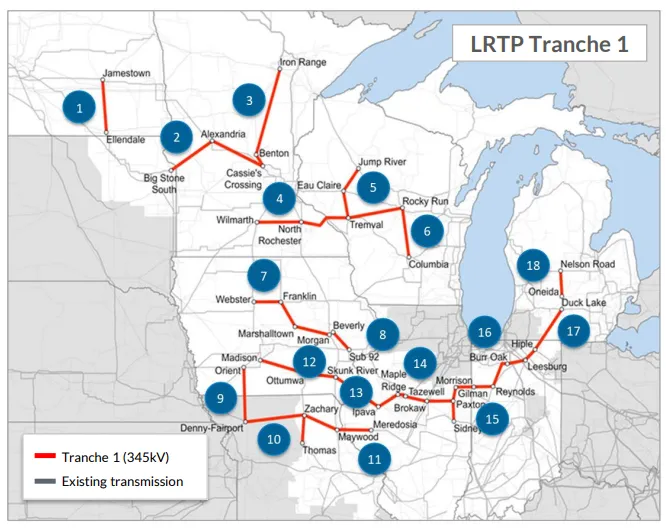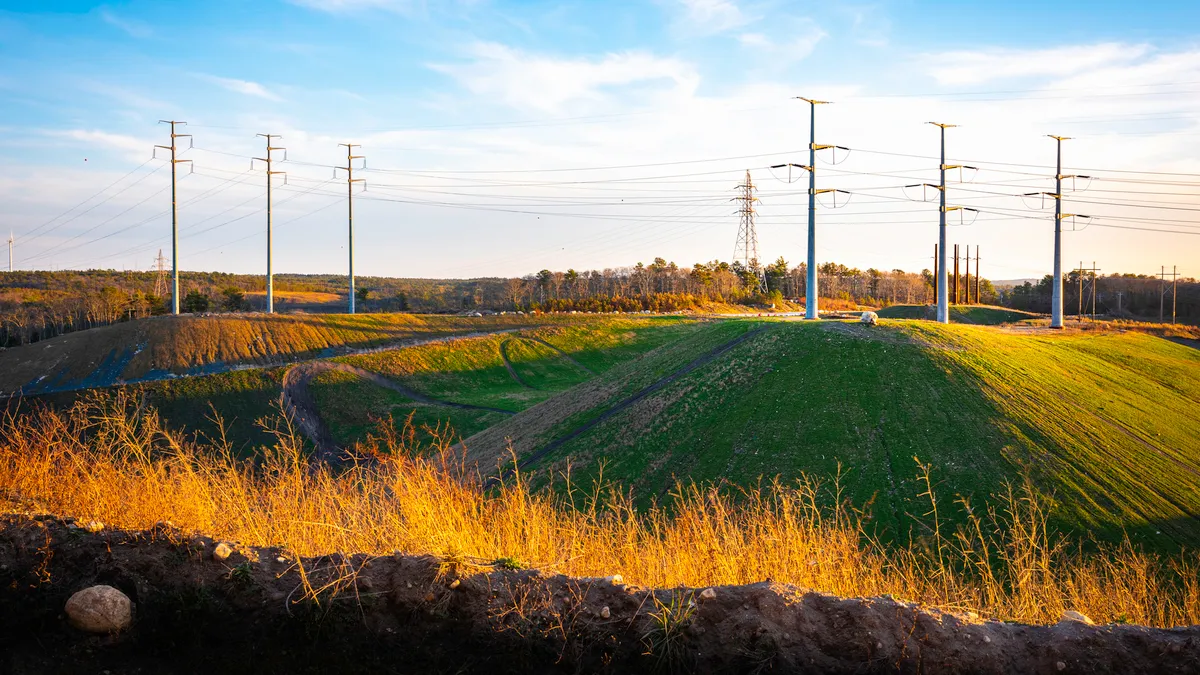Dive Brief:
-
The Midcontinent Independent System Operator’s board on Monday approved a $10.3 billion transmission plan that could support about 53 GW of wind, solar, hybrid and stand-alone battery projects found in state and utility clean energy goals in its northern and central regions.
-
While the projects were designed to maintain grid reliability amid a changing generation mix, MISO estimates that it will bring $23.2 billion to $52.2 billion in present value net benefits over 40 years, including up to $19.9 billion in congestion and fuel cost savings, according to a presentation by Aubrey Johnson, MISO vice president of system planning and competitive transmission.
-
Next, MISO plans to develop another set of transmission projects for its northern and central areas, followed by one for its southern region and then one to increase transmission capacity between its northern and southern areas.
Dive Insight:
The 18 transmission projects approved Monday are designed to facilitate an expected shift in MISO’s generation mix, including the retirement of about 58 GW of mainly coal-fired power plants, and the addition of about 90 GW of solar, gas and wind by 2039, according to Johnson’s presentation.

MISO expects some of the projects will begin coming online in 2028, said Johnson, who noted the proposal grew out of a two-year long-range transmission planning stakeholder process.
The projects’ benefits are expected to be more than twice their costs in all of MISO’s northern zones, Johnson said.
Following a complaint at the Federal Energy Regulatory Commission last week, MISO expects it will indicate on Aug. 8 which projects will go through a competitive bidding process and which will be assigned to incumbent utilities due to state laws, according to Johnson.
MISO plans to release a schedule for pending requests for proposals on Aug. 24 and issue the first RFP by Sept. 23, Johnson said.
FERC is also reviewing a MISO proposal for assigning certain upgrade projects in the portfolio to incumbent utilities.
MISO last approved a major transmission buildout in 2011 through its multi-value transmission initiative.
“Our nation needs this as a model for how to move forward on building on our transmission grid in response to industry needs and market forces and customer choices,” Lauren Azar, a consultant for the Sustainable FERC project and an advisor to the Energy Department secretary during the Obama administration, said Monday, while urging MISO to move quickly on the upcoming tranches.
The Clean Grid Alliance, an advocacy group, praised MISO’s effort and called for continued transmission development.
“It is just the first step in much-needed investment in transmission capacity nationwide,” Natalie McIntire, Clean Grid Alliance lead transmission consultant, said in a statement. “We have more work to do to fully achieve carbon reduction goals and build a more resilient grid to withstand increased weather-related challenges.”















